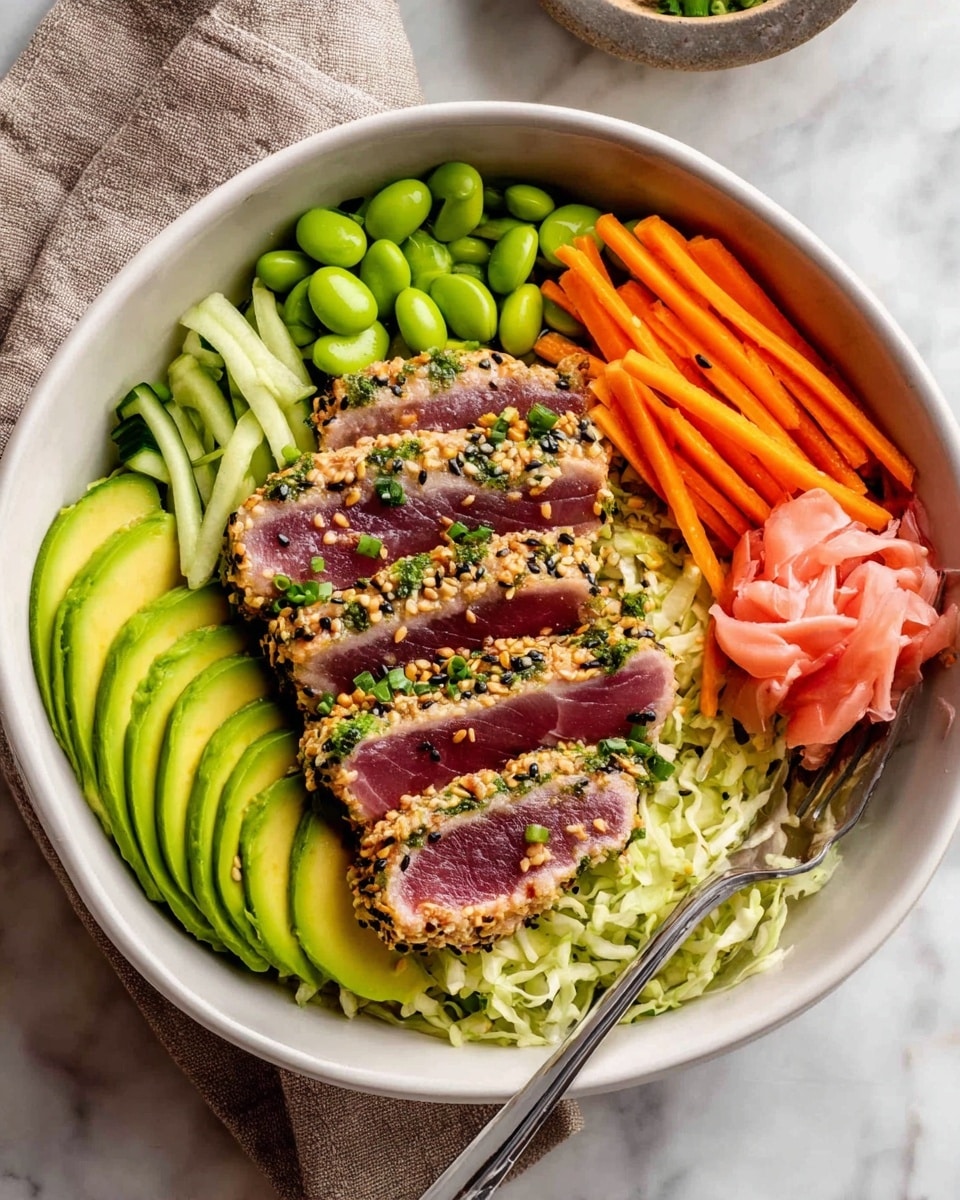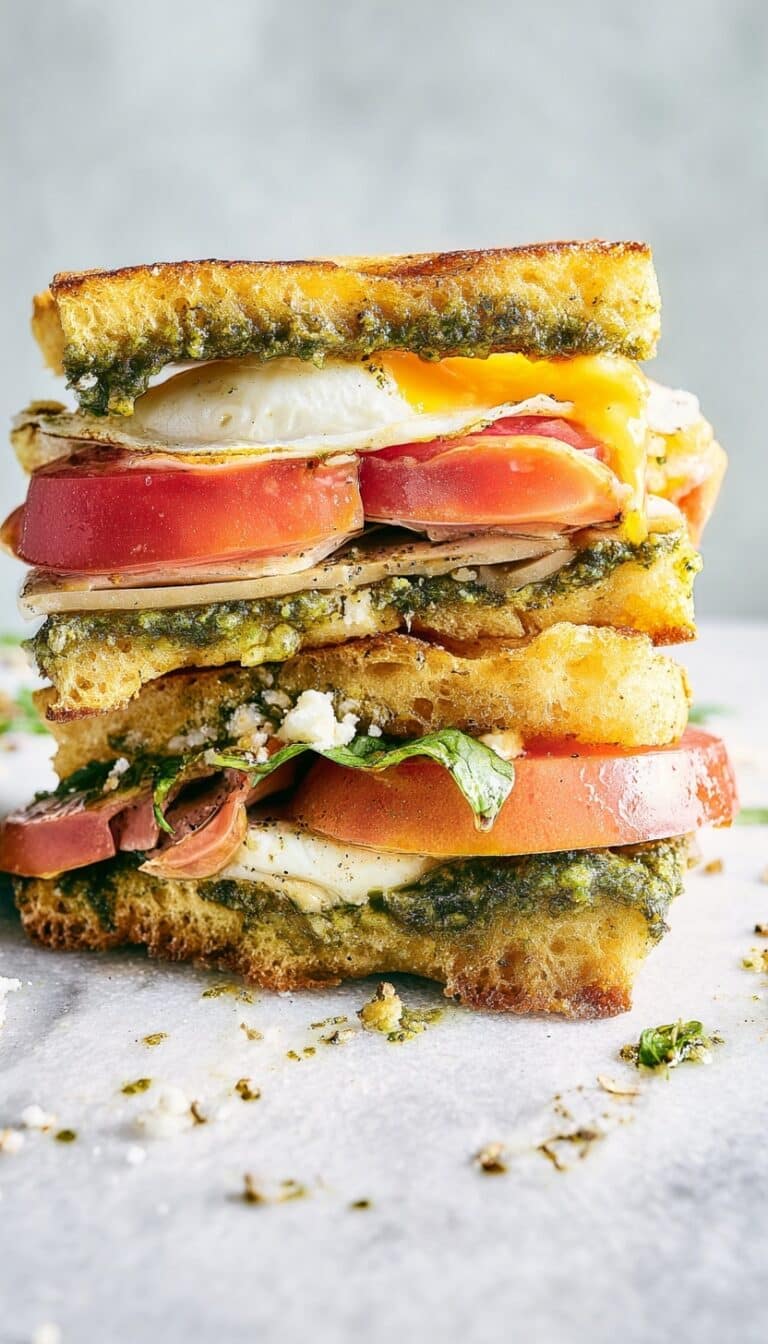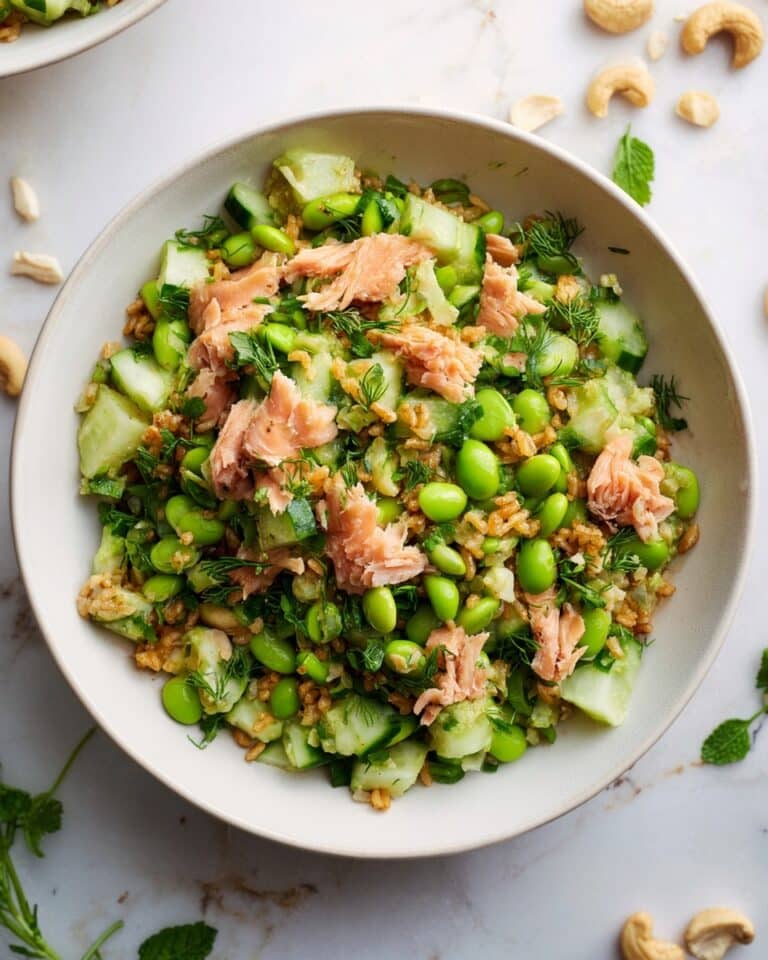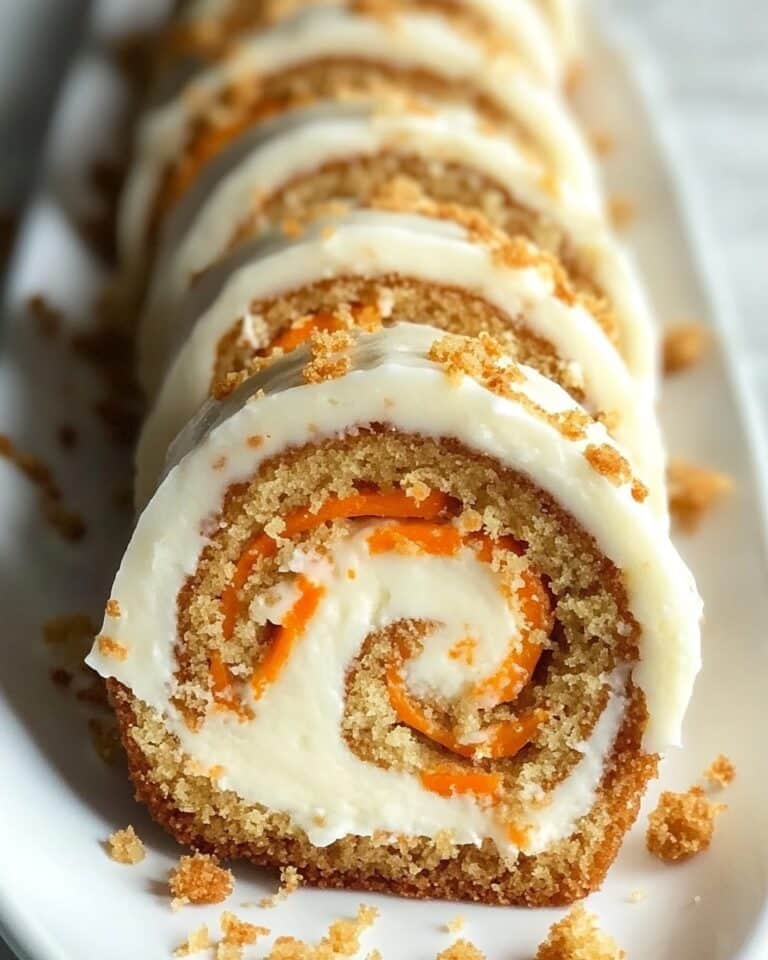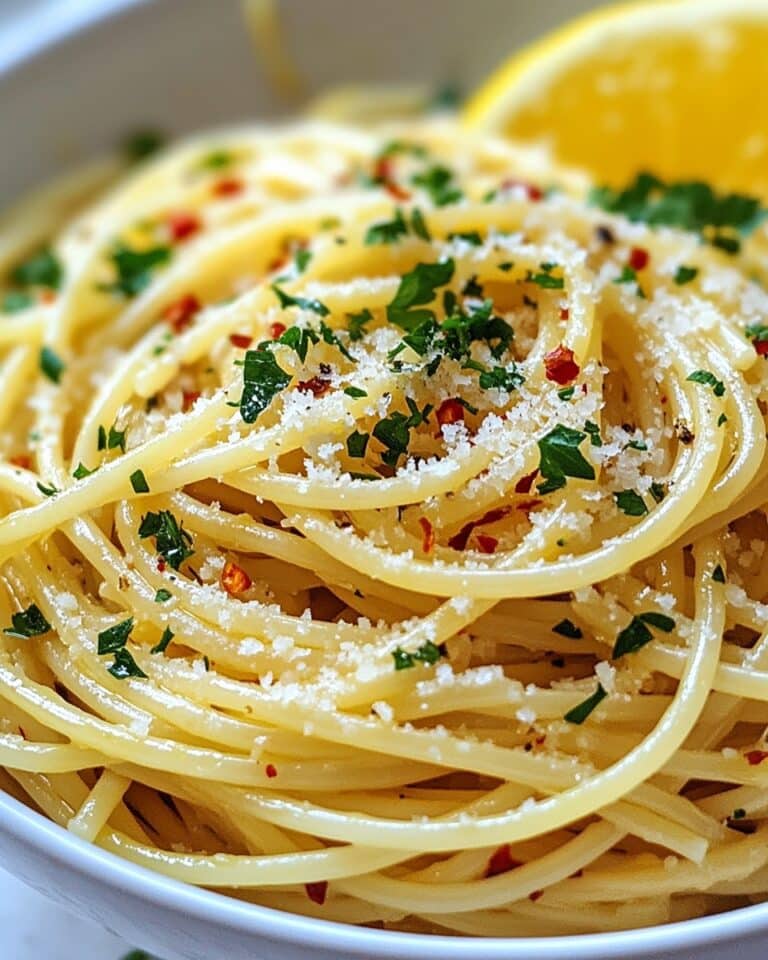Sushi Salad with Wasabi Ahi Tuna Recipe
Whenever I crave something fresh yet bursting with flavor, this Sushi Salad with Wasabi Ahi Tuna Recipe is my go-to. It’s that perfect balance of light, crunchy veggies and rich, spicy tuna that feels fancy but comes together pretty quickly. I love making it for casual dinners or when friends drop by unexpectedly—everyone always asks for the recipe!
What really gets me is how the wasabi adds just the right kick without overpowering the silky ahi tuna. If you’re looking for a dish that’s colorful, healthy, and packed with different textures, this sushi salad is worth your time. Plus, it’s incredibly versatile—you can switch up the veggies or add extra heat to suit your mood.
Ingredients You’ll Need
This sushi salad is all about fresh, crisp veggies paired with savory, spicy ahi tuna and a tangy sesame ginger vinaigrette. Picking quality ahi tuna is key—look for firm, bright red steaks at the seafood counter to get that melt-in-your-mouth goodness.
- Wasabi peas: Adds crunch and a hint of heat that complements the tuna perfectly.
- Black sesame seeds: Brings an earthy nuttiness and a beautiful contrast in color.
- Kosher salt: Essential for seasoning and enhancing all the flavors.
- Ahi tuna steaks: The star of the show—choose sushi-grade if you can for the best texture and taste.
- Nonstick cooking spray: Keeps the tuna from sticking when you sear it.
- Avocado oil: A high smoke point oil perfect for searing tuna quickly without burning.
- Ponzu or soy sauce: The base of the vinaigrette, bringing umami and saltiness.
- Toasted sesame oil: Adds a deep, toasty flavor to the dressing.
- Extra-virgin olive oil: Balances the dressing with fruity notes.
- Rice vinegar or distilled white vinegar: Adds bright acidity to cut through the richness.
- Honey or sugar: Just a touch of sweetness to soften the sharpness of the vinegar.
- Scallions: Offers a mild onion flavor and freshness.
- Fresh ginger: Brings a warm, zesty zing to the vinaigrette.
- Fresh garlic: Adds depth and a bit of savory punch.
- Wasabi paste (optional): For those who like an extra kick of heat in their dressing.
- Green cabbage: The crunchy base for the salad, shredded thinly.
- Carrots: Sweet and crunchy, shredded for ease of eating.
- Shelled edamame: Protein-rich and subtly nutty, cooked beforehand.
- English cucumber: Crisp and refreshing, julienned for texture contrast.
- Avocado: Creamy slices that mellow the heat beautifully.
- Cooked brown rice: A fiber-packed, hearty foundation for the salad.
- Pickled ginger (optional): Offers a palate-cleansing bite that’s classic in sushi dishes.
Variations
I love how this Sushi Salad with Wasabi Ahi Tuna Recipe lends itself to tweaking—you’re free to personalize flavors or make it fit your dietary preferences easily. Play around with textures and heat levels until you find your perfect combo.
- Spicy Mayo Variation: I sometimes drizzle a little spicy mayo made with sriracha and mayo over the tuna pieces for an indulgent twist that guests rave about.
- Vegetarian Version: Swap the ahi tuna for grilled tofu or marinated mushrooms and increase the edamame for protein; it still feels satisfying and fresh.
- Different Greens: I occasionally swap green cabbage for napa cabbage or even baby spinach, which changes the flavor slightly but keeps that crisp factor.
- Swap Brown Rice: If you prefer, try quinoa or cauliflower rice to keep it lighter or make it gluten-free.
- Extra Wasabi Kick: Adding more wasabi paste to the vinaigrette amps up the heat—perfect for when I’m in the mood for something bold.
How to Make Sushi Salad with Wasabi Ahi Tuna Recipe
Step 1: Prep Your Tuna and Peas
Start by coarsely crushing the wasabi peas—this adds a fun, crunchy crust for your tuna steaks. Mix the crushed peas with black sesame seeds and a pinch of kosher salt. Press this mixture onto all sides of the tuna steaks gently but firmly. This combo not only gives the tuna that signature wasabi flavor but also a delightful texture you’ll love biting into.
Step 2: Sear the Tuna
Heat a skillet over medium-high heat and spray it lightly with nonstick cooking spray. When the pan is hot, add avocado oil. Sear the tuna steaks for about 1-2 minutes per side for rare to medium-rare doneness—the goal is a beautifully seared crust with a tender, pink center. Don’t overcook or you’ll miss that melt-in-your-mouth texture I adore.
Step 3: Whip Up the Sesame Ginger Vinaigrette
While the tuna cooks, whisk together ponzu or soy sauce, toasted sesame oil, olive oil, rice vinegar, and honey in a bowl. Add minced scallions, fresh grated ginger, garlic, and if you like a bit more sting, stir in wasabi paste. Taste and adjust sweetness or acidity to your liking—it’s that simple and worth the extra second.
Step 4: Prepare the Salad Base
In a large bowl, toss shredded green cabbage, carrots, cooked edamame, and julienned cucumber. Add cooked brown rice to make it more filling. Drizzle the vinaigrette over the salad and toss gently to combine everything thoroughly but without bruising the delicate veggies.
Step 5: Assemble and Serve
Slice your tuna steaks thinly and arrange the slices over your dressed salad. Place creamy avocado slices around for richness and garnish with a few pickled ginger slices if you like that traditional sushi palate cleanser. If you want extra crunch, sprinkle on a few more crushed wasabi peas or sesame seeds just before serving.
How to Serve Sushi Salad with Wasabi Ahi Tuna Recipe
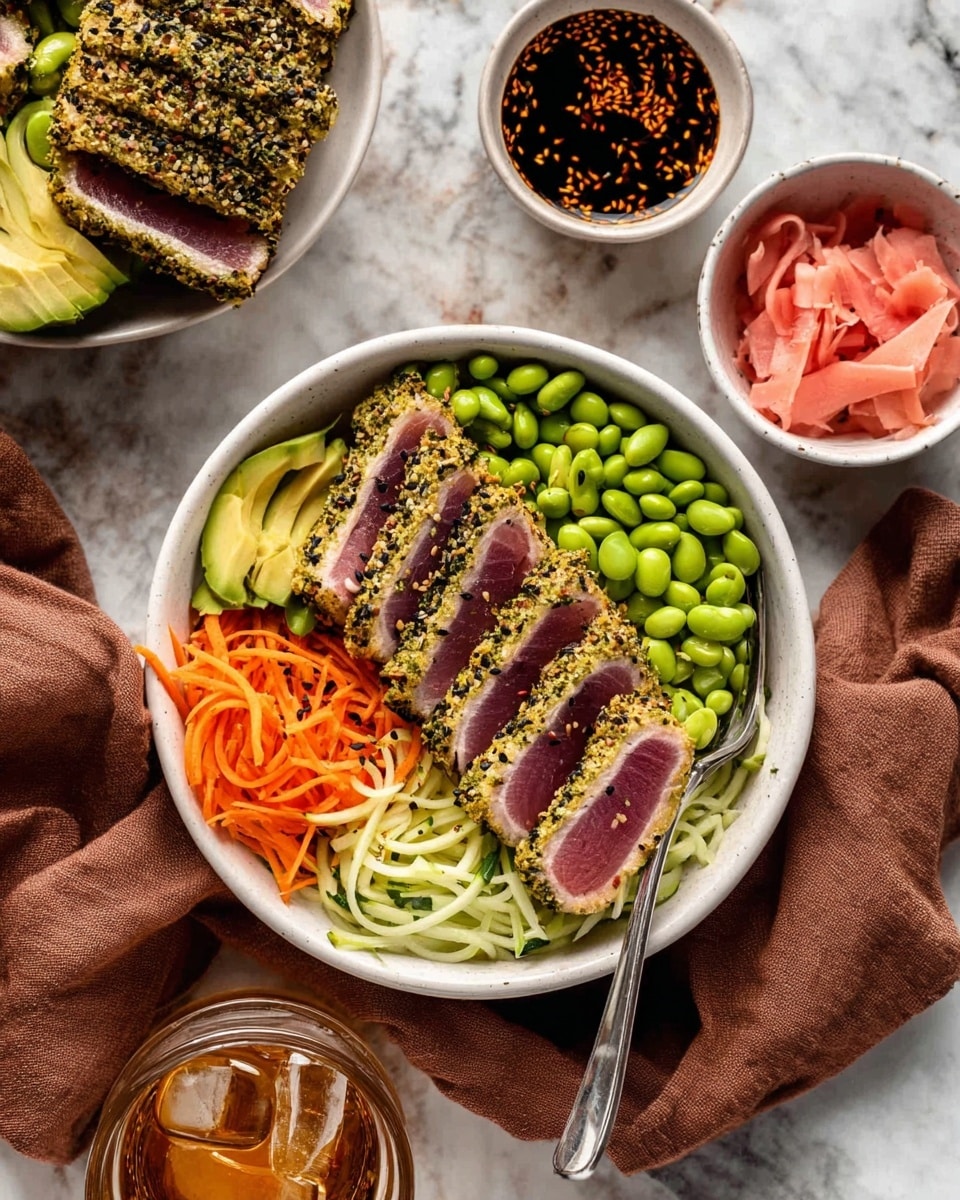
Garnishes
I always top this salad with extra black sesame seeds and some thinly sliced scallions for a pop of color and freshness. Sometimes, I’ll add toasted nori strips for an even more authentic sushi vibe. Pickled ginger on the side is a must for me—it cuts through the richness and cleanses your palate beautifully.
Side Dishes
When serving this sushi salad, I like to keep sides light—steamed edamame pods or a simple miso soup complement it perfectly without overwhelming the flavors. If you want something crunchy, crispy seaweed snacks are a great addition. For a heartier meal, a small bowl of soba noodles tossed in sesame oil feels just right.
Creative Ways to Present
For dinner parties, I’ve styled this salad in individual glass bowls or even hollowed-out cucumbers to impress guests. Another fun idea is serving the tuna separately as sashimi slices on the side and letting everyone add their own to the salad base—makes it interactive and adds a casual touch to a fancy dish.
Make Ahead and Storage
Storing Leftovers
I store leftover salad and tuna separately to keep the textures fresh. The salad keeps well in an airtight container for up to 2 days in the fridge. The tuna is best eaten within 24 hours, sliced and chilled, because freshness really matters with raw fish.
Freezing
Freezing this sushi salad isn’t something I recommend, especially because of the fresh veggies and avocado. Tuna can be frozen raw, but it’s best to buy sushi-grade fresh and enjoy it fresh to get that silky texture and flavor.
Reheating
This dish isn’t really meant for reheating—but if you have leftover rice or edamame, you can warm those gently while keeping the salad cold and fresh. For the tuna, it’s best enjoyed cold or at room temperature to maintain that perfect texture and flavor.
FAQs
-
Can I substitute the ahi tuna with another type of fish?
Absolutely! While ahi tuna is traditional and has that firm texture, you can use salmon or even cooked shrimp if preferred. Just make sure the fish is sushi-grade if you plan to serve it raw or lightly seared.
-
Is wasabi paste necessary in the vinaigrette?
Not at all. The wasabi peas already add some heat, so the paste is optional. I add it when I want to kick up the spice, but if you’re sensitive to heat, feel free to skip or reduce it.
-
How can I make this recipe gluten-free?
Use tamari or a gluten-free soy sauce instead of regular soy sauce or ponzu. Also, check the labels on your wasabi peas to ensure they don’t contain gluten. This swap keeps the flavors authentic without gluten concerns.
-
Can I prepare the dressing ahead of time?
Yes! The sesame ginger vinaigrette actually tastes better when it sits for a bit, allowing the flavors to meld. Just keep it refrigerated and give it a quick whisk before tossing with the salad.
Final Thoughts
This Sushi Salad with Wasabi Ahi Tuna Recipe holds a special place in my weekly rotation because it’s fresh, exciting, and surprisingly easy to make at home. It’s one of those meals that feels you’re treating yourself, yet it’s totally doable on a weeknight. I really encourage you to try it—once you do, you might find it becoming your new favorite for a healthy, flavorful dinner that also impresses anyone lucky enough to join you at the table.
PrintSushi Salad with Wasabi Ahi Tuna Recipe
A vibrant and fresh Sushi Salad with Wasabi Ahi Tuna featuring perfectly seared ahi tuna crusted with wasabi peas and black sesame seeds, served over a bed of crunchy cabbage, shredded carrots, edamame, cucumber, avocado, and brown rice. Tossed with a zesty sesame ginger vinaigrette, this dish combines bold flavors and textures reminiscent of sushi in a healthy, colorful salad form.
- Prep Time: 20 minutes
- Cook Time: 5 minutes
- Total Time: 25 minutes
- Yield: 4 servings
- Category: Salad
- Method: Stovetop
- Cuisine: Japanese-inspired
- Diet: Low Fat
Ingredients
Tuna
- ½ cup wasabi peas
- 2 tablespoons black sesame seeds
- kosher salt, to taste
- 4 (4-6 ounce) ahi tuna steaks
- nonstick cooking spray
- 1 tablespoon avocado oil
Sesame Ginger Vinaigrette
- ¼ cup ponzu or soy sauce
- 2 tablespoons toasted sesame oil
- 2 tablespoons extra-virgin olive oil
- 2 tablespoons rice vinegar or distilled white vinegar
- 2 teaspoons honey or sugar
- 2 scallions, minced
- 2 teaspoons grated fresh ginger, or 1 teaspoon dried ginger
- ½ teaspoon minced fresh garlic, or ¼ teaspoon garlic powder
- 1 teaspoon wasabi paste (optional)
Salad
- 5 cups shredded green cabbage
- 3 large carrots, shredded
- 2 cups shelled edamame, cooked according to package directions
- 1 English cucumber, julienned
- 1 avocado, sliced
- 1–2 cups cooked brown rice
- pickled ginger (optional)
Instructions
- Prepare Tuna Crust: Place wasabi peas and black sesame seeds in a food processor and pulse until the wasabi peas are coarsely ground but retain some texture. Spread the mixture on a plate and season with kosher salt. Press both sides of the ahi tuna steaks into the wasabi pea and sesame seed crust to coat well.
- Cook Tuna: Heat a nonstick skillet over medium-high heat and spray with nonstick cooking spray or add 1 tablespoon avocado oil. Sear the tuna steaks 1-2 minutes per side until crusted on the outside but still rare in the center, or cook to your desired doneness. Remove from heat and let rest for a few minutes, then slice thinly.
- Make Sesame Ginger Vinaigrette: In a small bowl, whisk together ponzu or soy sauce, toasted sesame oil, extra-virgin olive oil, rice vinegar, and honey or sugar until combined. Stir in minced scallions, grated ginger, minced garlic, and wasabi paste if using. Adjust seasoning to taste.
- Prepare Salad Base: In a large mixing bowl, combine shredded green cabbage, shredded carrots, cooked edamame, julienned cucumber, sliced avocado, and cooked brown rice. Toss gently to mix all ingredients evenly.
- Assemble Salad: Drizzle the prepared sesame ginger vinaigrette over the salad and toss gently to coat. Arrange slices of the crusted ahi tuna on top of the salad and garnish with pickled ginger if desired.
- Serve: Serve immediately for best texture and flavor. Enjoy the crunchy, spicy, and fresh components of this sushi-inspired salad.
Notes
- To ensure tuna is fresh and safe to eat rare, buy sushi-grade ahi tuna from a trusted source.
- Wasabi paste is optional in the vinaigrette, but adds a spicy kick if included.
- You can substitute brown rice with sushi rice or quinoa if preferred.
- Cook edamame according to package instructions, typically boiling for 3-5 minutes, then drain and cool before adding to salad.
- Drizzle additional ponzu or soy sauce at the table if desired for extra flavor.

